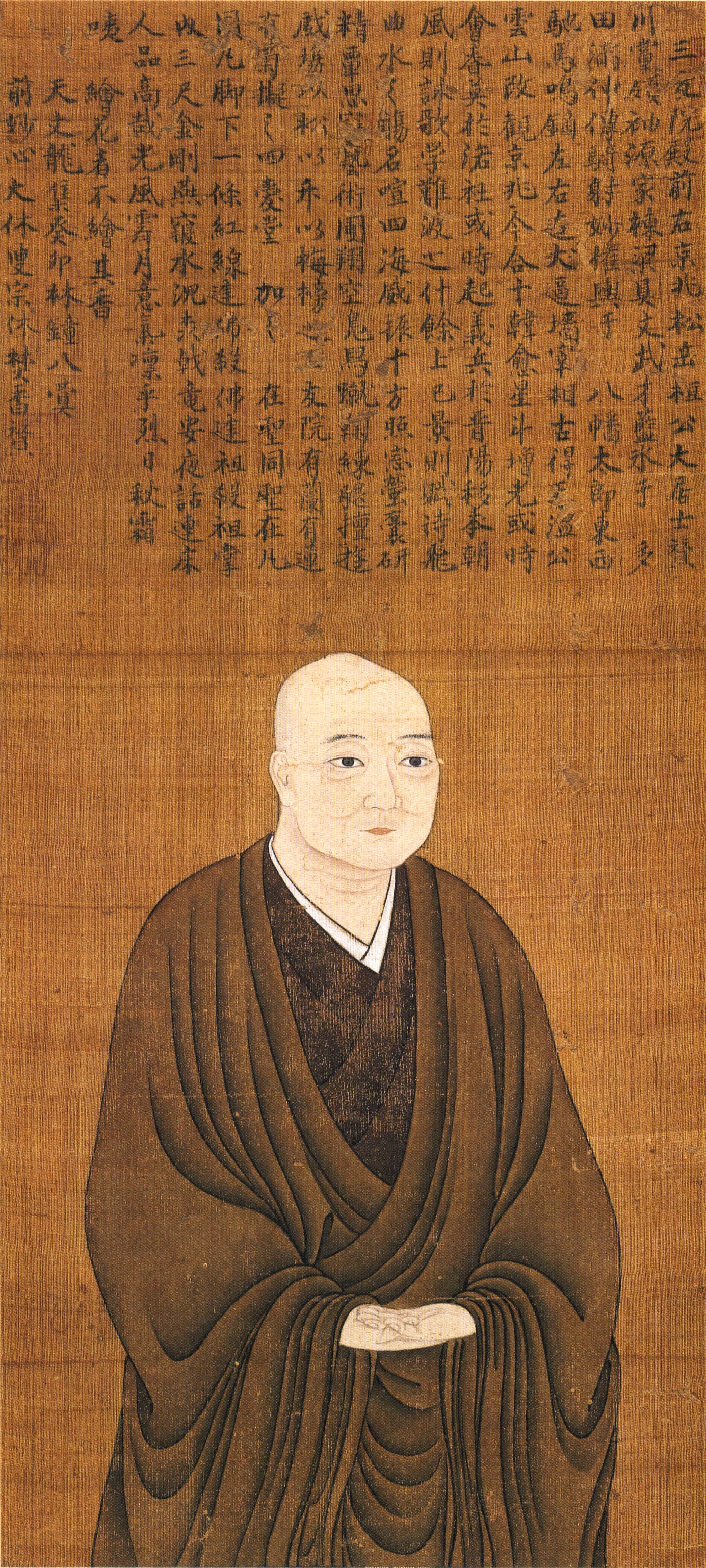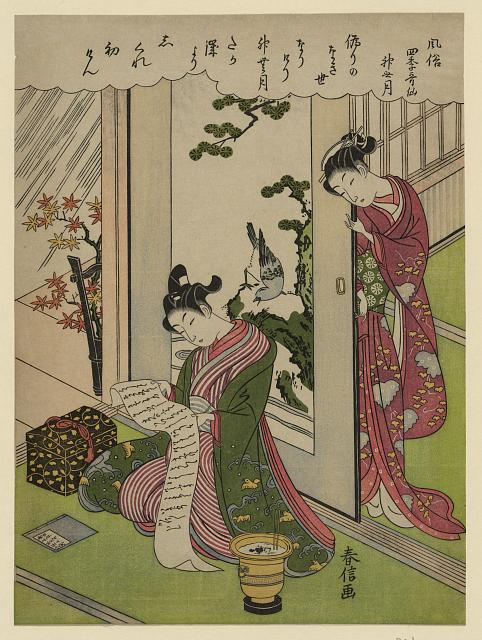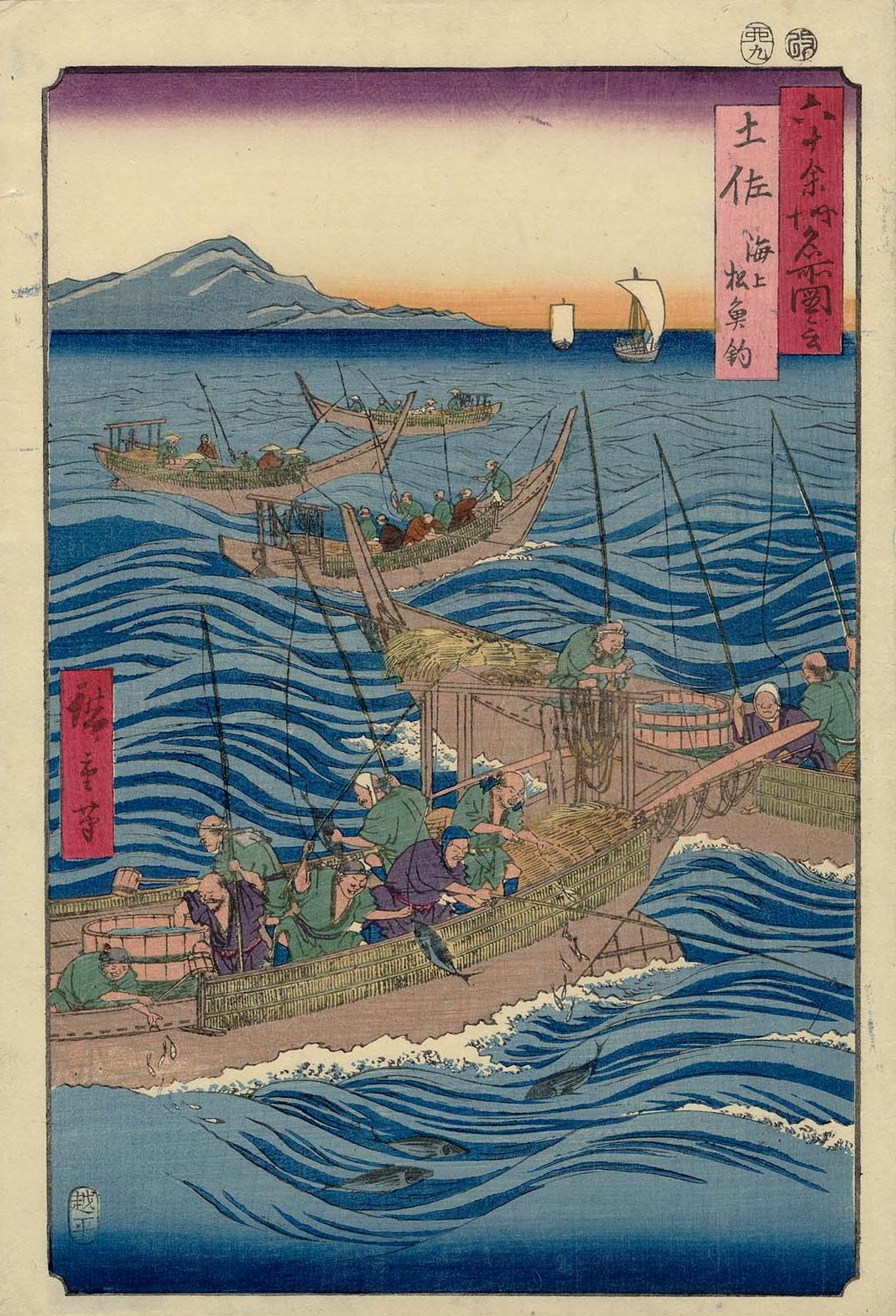|
Hosokawa Takakuni
Hosokawa Takakuni (, 1484 – 17 July 1531) was the most powerful military commander in the Muromachi period under Ashikaga Yoshiharu, the twelfth ''shōgun''. His father was Hosokawa Masaharu, a member of the branch of the Hosokawa clan. His childhood name was Rokuro (六郎). In 1507, Hosokawa Masamoto was killed by his foster son, Hosokawa Sumiyuki who had been disinherited by Masamoto. Takakuni supported Hosokawa Sumimoto and got credit for putting down Sumiyuki. Because of that, he got involved with the Muromachi shogunate. In 1508, when Ōuchi Yoshioki marched his armies into Kyoto with Ashikaga Yoshitane (the former ''shōgun'' who had escaped to Suō Province), Takakuni conspired with them and purged the shogun Ashikaga Yoshizumi and Sumimoto to Ōmi Province. Takakuni and Yoshioki took hold of the Muromachi shogunate. Takakuni took over as head of the Hosokawa family and became ''Kanrei''. In addition, he also held the post of ''shugo'' of Settsu Province, Tanba Pro ... [...More Info...] [...Related Items...] OR: [Wikipedia] [Google] [Baidu] |
Shugo
, commonly translated as “(military) governor,” “protector,” or “constable,” was a title given to certain officials in feudal Japan. They were each appointed by the ''shōgun'' to oversee one or more of the provinces of Japan. The position gave way to the emergence of the ''daimyōs'' (大名, feudal lords) in the late 15th century, as ''shugo'' began to claim power over lands themselves, rather than serving simply as governors on behalf of the shogunate. The post is said to have been created in 1185 by Minamoto no Yoritomo to aid the capture of Yoshitsune, with the additional motivation of extending the rule of the shogunate government throughout Japan. The ''shugo'' (military governors) progressively supplanted the existing ''kokushi'' (civil governors), who were appointed by the Imperial Court in Kyoto. Officially, the ''gokenin'' in each province were supposed to serve the ''shugo'', but in practice, the relationship between them was fragile, as the gokenin were ... [...More Info...] [...Related Items...] OR: [Wikipedia] [Google] [Baidu] |
16th-century LGBT People
The 16th century begins with the Julian year 1501 ( MDI) and ends with either the Julian or the Gregorian year 1600 ( MDC) (depending on the reckoning used; the Gregorian calendar introduced a lapse of 10 days in October 1582). The 16th century is regarded by historians as the century which saw the rise of Western civilization and the Islamic gunpowder empires. The Renaissance in Italy and Europe saw the emergence of important artists, authors and scientists, and led to the foundation of important subjects which include accounting and political science. Copernicus proposed the heliocentric universe, which was met with strong resistance, and Tycho Brahe refuted the theory of celestial spheres through observational measurement of the 1572 appearance of a Milky Way supernova. These events directly challenged the long-held notion of an immutable universe supported by Ptolemy and Aristotle, and led to major revolutions in astronomy and science. Galileo Galilei became a champion o ... [...More Info...] [...Related Items...] OR: [Wikipedia] [Google] [Baidu] |
1531 Deaths
Year 1531 ( MDXXXI) was a common year starting on Sunday (link will display the full calendar) of the Julian calendar. Events January–June * January 26 – Lisbon, Portugal is hit by an earthquake, in which thousands die. * February 27 – Lutheran princes in the Holy Roman Empire form an alliance known as the Schmalkaldic League. * February or March – Battle of Antukyah: Ahmad ibn Ibrahim al-Ghazi of the Adal Sultanate defeats the Ethiopian army. * April – Battle of Puná: Francisco Pizarro defeats the island's native inhabitants. * April 12 – Askiya Musa is assassinated by his brothers in Songhai; Askia Mohammad Benkan is enthroned the same day. * April 16 – The city of Puebla, Mexico, is founded. * May – The third Dalecarlian rebellion in Sweden appears to be over, when the king accepts an offer made by the rebels, but violence flares up again the following year. * June 24 – The city of San Juan del Rí ... [...More Info...] [...Related Items...] OR: [Wikipedia] [Google] [Baidu] |
1484 Births
Year 1484 ( MCDLXXXIV) was a leap year starting on Thursday (link will display the full calendar) of the Julian calendar, the 1484th year of the Common Era (CE) and Anno Domini (AD) designations, the 484th year of the 2nd millennium, the 84th year of the 15th century, and the 5th year of the 1480s decade. Events January–December * March 26 – William Caxton, the first printer of books in English, prints his translation of ''Aesop's Fables'' in London. * May 30 – Charles VIII of France (''Charles l'Affable'') is crowned. * June 22 – The first known book printed by a woman, Anna Rügerin, is an edition of Eike of Repgow's compendium of customary law, the ''Sachsenspiegel'', produced in Augsburg. * July 6 – Portuguese sea captain Diogo Cão finds the mouth of the Congo River. * July 22 – Battle of Lochmaben Fair: A 500-man raiding party led by Alexander Stewart, Duke of Albany, and James Douglas, 9th Earl of Douglas, is defeated by ... [...More Info...] [...Related Items...] OR: [Wikipedia] [Google] [Baidu] |
Amagasaki
270px, Amagasaki Castle 270px, Aerial view of Amagasaki city center 270px, Amagasaki Station is an industrial city located in Hyōgo Prefecture, Japan. , the city had an estimated population of 455,555 in 223812 households, and a population density of 9000 persons per km². The total area of the city is . Geography Amagasaki is located in far southeastern Hyōgo Prefecture, next to Osaka. It has the fourth largest population in Hyōgo Prefecture after Kobe, Himeji, and Nishinomiya. Residential areas account for most of the rest of the coastal areas, industrial areas along the Meishin Expressway and JR West Fukuchiyama Line, commercial areas around Hanshin Amagasaki Station and JR JR Amagasaki Station, and its population density is the highest among municipalities in Hyogo Prefecture. Ground subsidence caused by the pumping up of groundwater by factories has reduced one-third of the city's area to sea level, causing flooding damage due to storm surges. Neighboring munic ... [...More Info...] [...Related Items...] OR: [Wikipedia] [Google] [Baidu] |
Hosokawa Harumoto
was a Japanese ''daimyō'' of the Muromachi and Sengoku periods, and the head of the Hosokawa clan. Harumoto's childhood name was Sōmei-maru (聡明丸). He was born to Hosokawa Sumimoto, another renowned samurai of the Muromachi era. Early life Harumoto succeeded to a house at the age of seven, after his father's death in 1520. While still a minor, he was supported by his caretaker Miyoshi Motonaga. His childhood name was Rokurō (). Shogun Deputy (''Kanrei'') In 1531, Harumoto defeated Hosokawa Takakuni, and regained the power. In addition, he feared Motonaga who had got credit and killed him next year. After that, Harumoto ruled the whole area of Kinai (Yamashiro Province, Yamato Province, Kawachi Province, Izumi Province and Settsu Province) and took hold of the Ashikaga shogunate as the Kanrei. In 1543, Hosokawa Ujitsuna who was the foster son of Takakuni, raised his armies, and in 1549, Miyoshi Nagayoshi who was a dominant retainer and the first son of Motonaga bet ... [...More Info...] [...Related Items...] OR: [Wikipedia] [Google] [Baidu] |
Miyoshi Motonaga
Miyoshi may refer to: Places *Miyoshi, Aichi, a city in Aichi Prefecture *Miyoshi, Chiba, a former village in Chiba Prefecture *Miyoshi, Hiroshima, a city in Hiroshima Prefecture *Miyoshi, Saitama, a town in Saitama Prefecture *Miyoshi, Tokushima, a city in Tokushima Prefecture * Miyoshi, Tokushima (Town), a former town in Tokushima Prefecture *Miyoshi District, Tokushima, a district in Tokushima Prefecture People with the given name *, Japanese pilot officer *, Japanese speed skater *, Japanese-American actress and singer Other uses *Miyoshi (surname) *Miyoshi clan is a Japanese family descended from Emperor Seiwa (850–880) and the Minamoto clan (Seiwa-Genji). They were a cadet branch of the Ogasawara clan and the Takeda clan. At the beginning of the 14th century AD, Ogasawara Nagafusa settled in Shik ..., Japanese clan {{disambiguation, geo, given name Japanese feminine given names ... [...More Info...] [...Related Items...] OR: [Wikipedia] [Google] [Baidu] |
Wakashū
is a historical Japanese term indicating an adolescent boy, used particularly during the Edo period (1603–1867). status was indicated by haircut. Appearance and ceremonies properly referred to a boy between the ages at which his head was partially shaven () (about 7–17 years of age), at which point a boy exited early childhood and could begin formal education, apprenticeship, or employment outside the home, and the coming of age ceremony (mid-teens through early 20s), which marked the transition to adulthood. During this period, the wore a distinctive hairstyle, with a small shaved portion at the crown of the head and long forelocks at front and sides, and typically wore kimono with open sleeves (); boys from wealthier families could wear . After the coming of age ceremony, the forelocks were shaved off, giving the adult male hairstyle (), and the boy assumed the adult male style of kimono with rounded sleeves. Although any person would be clearly classified as a child, ... [...More Info...] [...Related Items...] OR: [Wikipedia] [Google] [Baidu] |
Kozai Motomori
Kozai may refer to: *Kozai-Lidov mechanism, a dynamical phenomenon in celestial mechanics *3040 Kozai, an asteroid Persons with the surname Kozai *Yoshihide Kozai (1928–2018), Japanese astronomer *Kazuteru Kozai (born 1986), Japanese badminton player *Kaori Kozai (born 1963), Japanese singer *Takeshi Kozai (1974–2006), Japanese judoka See also *Kosai (other) Kosai can stand for: * Hiroki Kosai, 20th-century Japanese astronomer * Kosai, Shizuoka, Japan, a city * Kōsai, a disciple of Hōnen of the Jōdo Shū Buddhist sect * Kosai river, near Kharagpur in the Indian state of West Bengal * Count Kosai Uch ... * Kōzai Station {{disambig ... [...More Info...] [...Related Items...] OR: [Wikipedia] [Google] [Baidu] |
Awa Province (Tokushima)
was a province of Japan in the area that is today Tokushima Prefecture on the island of Shikoku. Nussbaum, Louis-Frédéric. (2005). "''Awa no Kuni''" in . Awa was bordered by Tosa, Sanuki, and Iyo Provinces. Its abbreviated form name was . In terms of the Gokishichidō system, Awa was one of the provinces of the Nankaidō circuit. Under the ''Engishiki'' classification system, Awa was ranked as one of the 35 "superior countries" (上国) in terms of importance, and one of the "middle countries" (中国) in terms of distance from the capital. The provincial capital was located in what is now the city of Tokushima. History Awa has been settled since the Japanese Paleolithic and the remains of Yayoi and Kofun period settlements and burial mounds have been found especially in the fertile Yoshino River valley. Per the ''Kogo Shūi,'' the name of the province was originally written "粟国" and was associated with the production of millet. Per the ''Kujiki'', the ''kuni no m ... [...More Info...] [...Related Items...] OR: [Wikipedia] [Google] [Baidu] |
Tosa Province
was a province of Japan in the area of southern Shikoku. Nussbaum, Louis-Frédéric. (2005). "''Tosa''" in . Tosa bordered on Awa to the northeast, and Iyo to the northwest. Its abbreviated form name was . In terms of the Gokishichidō system, Tosa was one of the provinces of the Nankaidō circuit. Under the ''Engishiki'' classification system, Tosa was ranked as one of the "middle countries" (中国) in terms of importance, and one of the "far countries" (遠国) in terms of distance from the capital. The provincial capital was located in what is now the city of Nankoku. The ''ichinomiya'' of the province is the Tosa shrine located in the city of Kōchi. retrieved 2011-08-09 [...More Info...] [...Related Items...] OR: [Wikipedia] [Google] [Baidu] |





